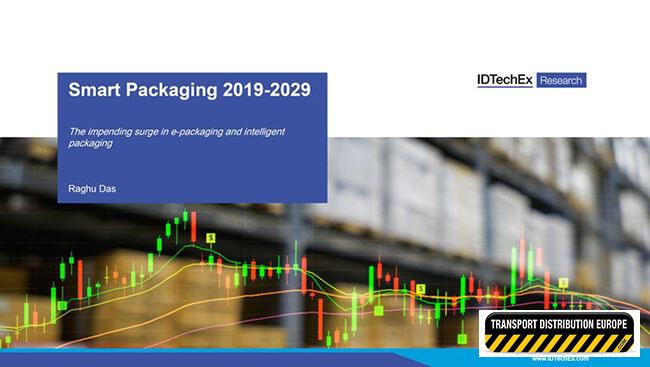Smart packaging counteracting the lost moment of truth
Apr 15, 2019
By Raghu Das, CEO, IDTechEx.
In the new report "Smart Packaging 2019-2029", IDTechEx Research finds that electronic smart packaging will become a $1.8 Billion market in 2029.
Retail is undergoing significant change. Not only are there many more people on the planet but that also includes many more elderly people, who need easier access to increasingly difficult-to-open packaging, designed that way to stop tamper in stores but making it harder for consumer use.
Cities are becoming more densely populated and so real-estate becomes more expensive, all the while retail tills waste space in stores. Waste is prolific - within the supply chain and at home - and sustainability is much discussed but work is only beginning. The rise of internet shopping for non-groceries is well documented and even mobility is changing with autonomous last mile electric vehicles in trial to rapidly deliver products to customers, which they increasingly expect. In addition, the rise of internet shopping for groceries is also occurring.
This is all challenging for brands. In retail, there are two well known moments of truth. The first is the immediate moments after the consumer sees the retail item package, where the consumer forms an opinion of the product based on the package. The second moment of truth is when the product is consumed or used. However, internet shopping is eroding the first moment of truth, with the bar being lowered for the competition who have not invested as much in marketing their product. The rules are now changing very quickly.
The IDTechEx Research report "Smart Packaging 2019-2029" addresses the opportunity arising from these trends, specifically looking at how technologies related to packaging are being developed and used to grow brands and provide consumers with valued additional benefits.
For example, there is increasing traction with RFID in packaging. The Japanese government ministry METI has announced alongside the leading Japanese retailers that they seek to tag 100 billion retail items in Japan in 2025 - provided the tag price point is appropriate. In part, this is driven by a lack of young people in the workforce in Japan, and they do not want those people deployed in unproductive roles, such as scanning products at a supermarket till.
Already several retailers are trialing automated checkouts in stores in Japan and China using RFID tagged products. Others achieve the same with sensor fusion, combining RF location technologies with machine vision - enabled by inexpensive cameras developed for smart phones and now moving into other applications. Amazon have several such stores in the US which eliminate tills.
Payments are changing too, with the rapid rise of QR codes in China, bypassing the need for smaller retailers to have card processing machines and obtain credit merchant status - apps such as WeChat and AliPay can send the money to the retailer immediately once the QR code has been read. This success is localized - popular social media apps elsewhere have failed to encroach on the payment business.
Tagged items in stores are boosting sales by providing better stock control and IDTechEx also see a trend to dual frequency RFID tags where consumers can use their NFC phone to interact with the product.
New technologies have now come to market including flexible ICs which will help to reduce the cost of NFC labels further, making it applicable to tagging more things.
Then there is the huge progress to packaging which further excites the consumer and differentiates the product, from light-up or sound emitting versions that can be personalised to smart packaging that can save lives by recording, for example, medication compliance in the form of smart blister packs or chemical time temperature indicators that alert with a vaccine is no longer appropriate to use since it is witnessed extreme temperatures in transit.
